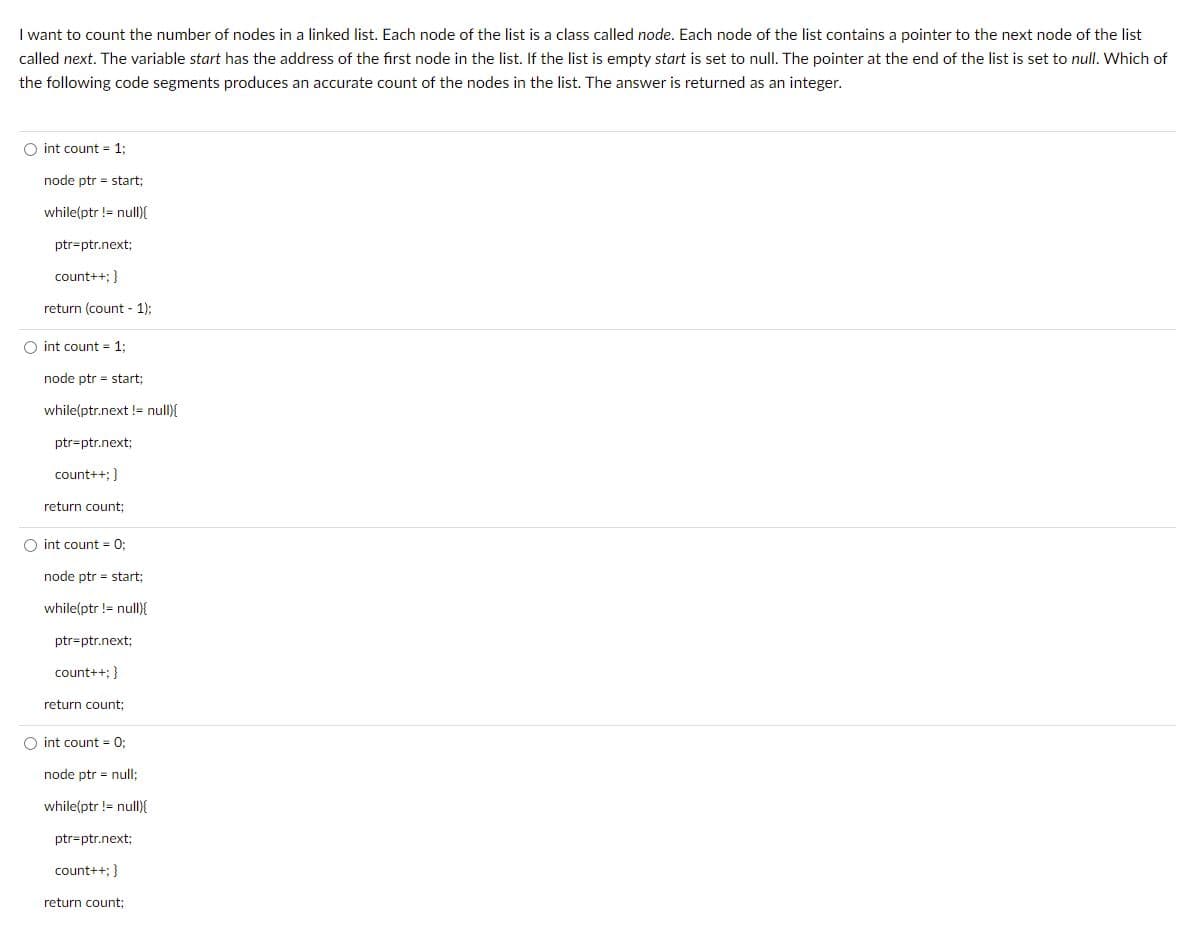I want to count the number of nodes in a linked list. Each node of the list is a class called node. Each node of the list contains a pointer to the next node of the list called next. The variable start has the address of the first node in the list. If the list is empty start is set to null. The pointer at the end of the list is set to null. Which of the following code segments produces an accurate count of the nodes in the list. The answer is returned as an integer.
I want to count the number of nodes in a linked list. Each node of the list is a class called node. Each node of the list contains a pointer to the next node of the list called next. The variable start has the address of the first node in the list. If the list is empty start is set to null. The pointer at the end of the list is set to null. Which of the following code segments produces an accurate count of the nodes in the list. The answer is returned as an integer.
C++ Programming: From Problem Analysis to Program Design
8th Edition
ISBN:9781337102087
Author:D. S. Malik
Publisher:D. S. Malik
Chapter17: Linked Lists
Section: Chapter Questions
Problem 5SA
Related questions
Question

Transcribed Image Text:I want to count the number of nodes in a linked list. Each node of the list is a class called node. Each node of the list contains a pointer to the next node of the list
called next. The variable start has the address of the first node in the list. If the list is empty start is set to null. The pointer t the end of the list is set to null. Which of
the following code segments produces an accurate count of the nodes in the list. The answer is returned as an integer.
O int count = 1;
node ptr start;
while(ptr != null){
ptr=ptr.next;
count++; }
return (count - 1);
Oint count = 1;
node ptr start;
while(ptr.next != null){
ptr-ptr.next;
count++; }
return count;
O int count = 0;
node ptr start;
while(ptr != null){
ptr-ptr.next;
count++; }
return count;
O int count = 0;
node ptr = null;
while(ptr != null){
ptr-ptr.next;
count++; }
return count;
Expert Solution
This question has been solved!
Explore an expertly crafted, step-by-step solution for a thorough understanding of key concepts.
Step by step
Solved in 2 steps

Knowledge Booster
Learn more about
Need a deep-dive on the concept behind this application? Look no further. Learn more about this topic, computer-science and related others by exploring similar questions and additional content below.Recommended textbooks for you

C++ Programming: From Problem Analysis to Program…
Computer Science
ISBN:
9781337102087
Author:
D. S. Malik
Publisher:
Cengage Learning

C++ Programming: From Problem Analysis to Program…
Computer Science
ISBN:
9781337102087
Author:
D. S. Malik
Publisher:
Cengage Learning